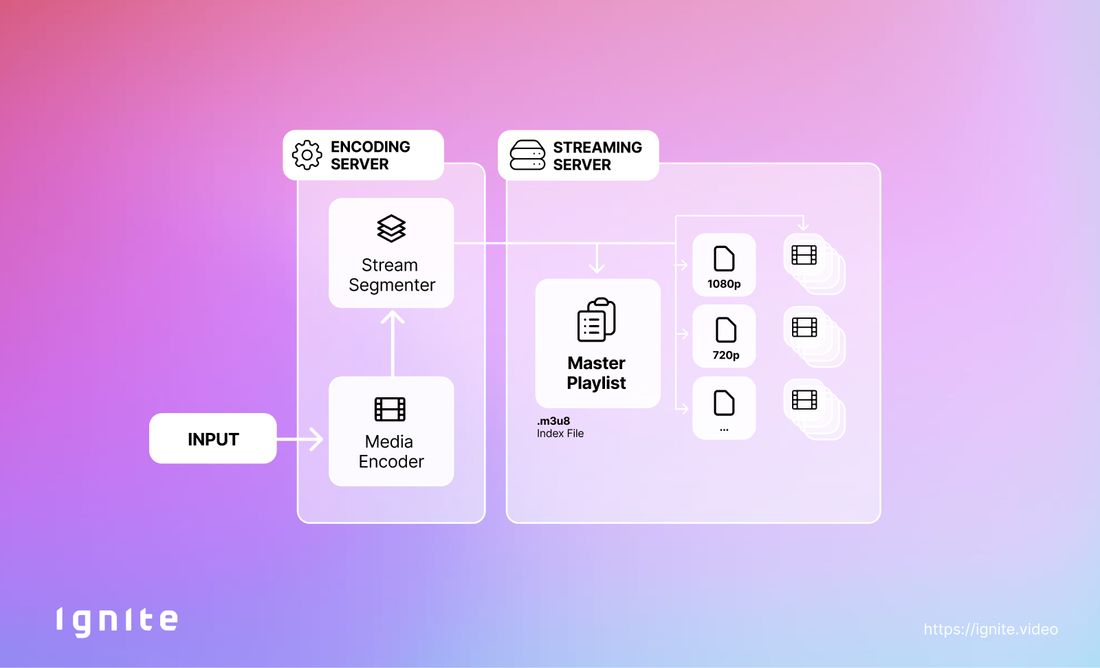
All About HLS Videostreaming: Benefits, Challenges, and Technical Insights
When companies embed video on their websites, they typically use external providers such as Ignite or upload as MP4/WebM files. Professional hosts usually prefer HLS streaming (HTTP Live Streaming) because of its many advantages. In this article, we aim to explain what HLS streams are, how they work, their benefits and how they differ from MP4 files — to help you understand why HLS has become the de facto standard for many streaming services and why you should consider it for your websites.
Basics: What is HLS?
HTTP Live Streaming (HLS) is a streaming protocol known for its adaptability and broad support. Introduced by Apple, it facilitates the segmented delivery of video content over the Internet and is now supported across all platforms and devices, making it a popular standard.
At its core, HLS splits content into smaller file segments that allow for adaptive bitrate adjustments. This means that the video quality dynamically adjusts to the viewer's bandwidth, ensuring a smooth, uninterrupted streaming experience.
Sound too technical?
Have you ever noticed how the quality of a video seems a bit lower in the first few seconds when you start watching a film? This is a real-life example of HLS in action. Instead of making you wait for the video to buffer, it starts playing immediately and the quality improves quickly. While you might be willing to wait a while to watch a film, patience is a rare commodity when it comes to websites. If your video takes too long to load or pauses during playback, you're likely to lose viewers. But with the first example — imagine our movie stops in the middle? F**k!
How does HLS work?
The HLS streaming process can be broken down into four basic steps if you're using a professional provider:
- Start with the original video: The process starts with the original video, uploaded in the highest quality possible. The format of your video doesn't matter and there's no need to compromise on quality. Handling several gigabytes is no problem.
- Encoding: First, your original video is encoded into different formats and resolutions. Typically this will include a 4K version (1080p) and several smaller versions (e.g. 720p to 240p). Anyone who has ever compressed video knows that it takes time. Doing this multiple times per video adds up, which is why an encoding server is used. These different versions are crucial for adaptive streaming, which offers viewers the best possible video quality based on their internet connection.
- Segmentation: Videos are divided into smaller segments, typically between 2 and 10 seconds in length. These segments are stored in Transport Stream format (.ts files) for fast loading and efficient buffering. Depending on the length of the video, this can result in hundreds or even thousands of files.
- Playlist creation: A .M3U8 playlist file is created to act as an "index" for all the video segments. This file tells the player which segments to download and in what order to play them. Typically, there's a master playlist that contains information about the different qualities and individual .m3u8 files for each quality.
- Streaming: When a user wants to watch a video, their device first opens the .m3u8 playlist and then begins to download and play the video segments. Depending on the available bandwidth, the player can switch between different quality levels to ensure continuous, uninterrupted playback.
This is known as 'adaptive streaming'. It's this whole process that enables efficient and adaptive delivery of video over the Internet, dynamically adapting to the user's network conditions.
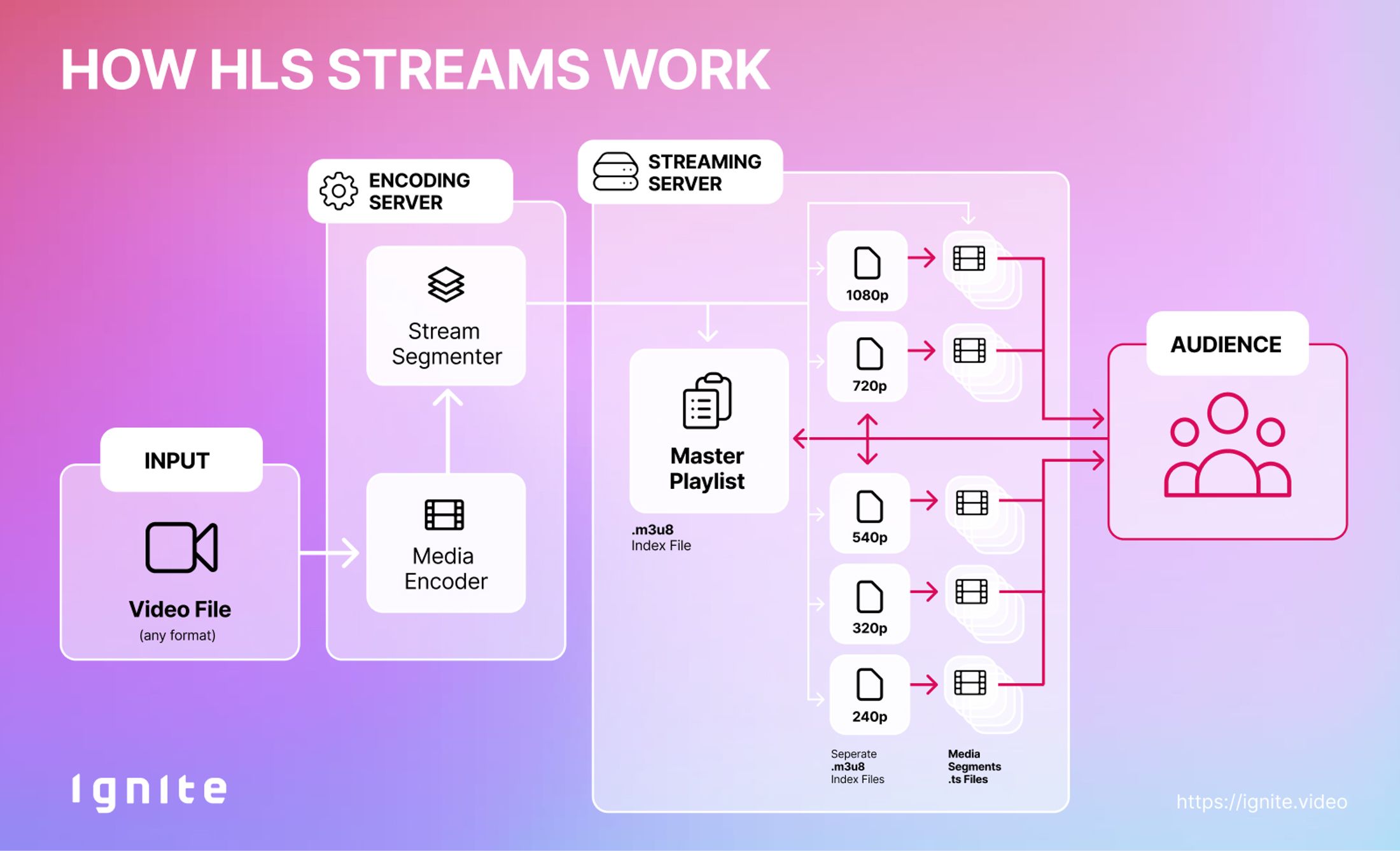
HLS streaming benefits
HLS offers several benefits that make it the preferred choice for content providers and viewers around the world:
- Universal compatibility: HLS is supported on a wide range of devices, including iOS, Android, Windows and Smart TVs. This broad compatibility ensures that content reaches a wide audience without the need for device-specific adaptations.
- Adaptive bitrate streaming: One of the key features of HLS is the ability to adjust video quality in real time. This minimizes buffering and increases viewer satisfaction. Imagine travelling on a train where the internet connection is intermittent, or even at home where similar problems can occur. Usually you don't notice such instability when browsing websites, but with video it becomes a noticeable problem due to the higher volume of data.
- Scalability: HLS can handle large streams, making it suitable for large live events as well as small websites with just a few videos. This scalability ensures that HLS can adapt to the size and demand of any streaming activity.
- Security features: HLS supports encryption and digital rights management (DRM) to protect content from unauthorised access. It's easy to see the difference in security; for example, while you can download an MP4 file with a simple right-click, you can't download an HLS stream. HLS offers enhanced security, although no system can offer 100% protection.
These benefits show why HLS has become a key technology for delivering video content efficiently and securely across multiple platforms.
Challenges of HLS streaming
Despite the many benefits of HLS, there are some challenges to consider:
- Effort for small and medium enterprises: Implementing HLS can be labour intensive. Smaller companies often use video hosting specialists such as Ignite to handle all aspects of encoding and video delivery. Typically, these companies do not set up their own streaming and encoding servers due to the complexity and cost involved.
- Complexity of management: Managing multiple bitrates and resolutions can complicate the broadcast setup. This complexity requires advanced management tools and expertise, which can be a barrier for companies without technical resources.
MP4-Files are also streamed, whats the difference?
Although MP4 files are also streamed, they are usually buffered and then played. The main difference is "adaptive streaming". Unlike MP4 files, which are delivered at a fixed quality, HLS dynamically adjusts the video quality according to the user's network conditions. This results in more efficient use of bandwidth and generally better video quality.
For example: Placing a few minutes of high-quality video on your website can quickly add up to 50-100MB. This becomes a problem if your viewers don't have a consistent, high-quality internet connection. The buffer may run out, causing the video to stop.
The issue gets worse if you have multiple videos on a page, which may even start playing automatically. This can strain the viewer's bandwidth and lead to a poor viewing experience due to frequent stops and starts as the video tries to buffer.
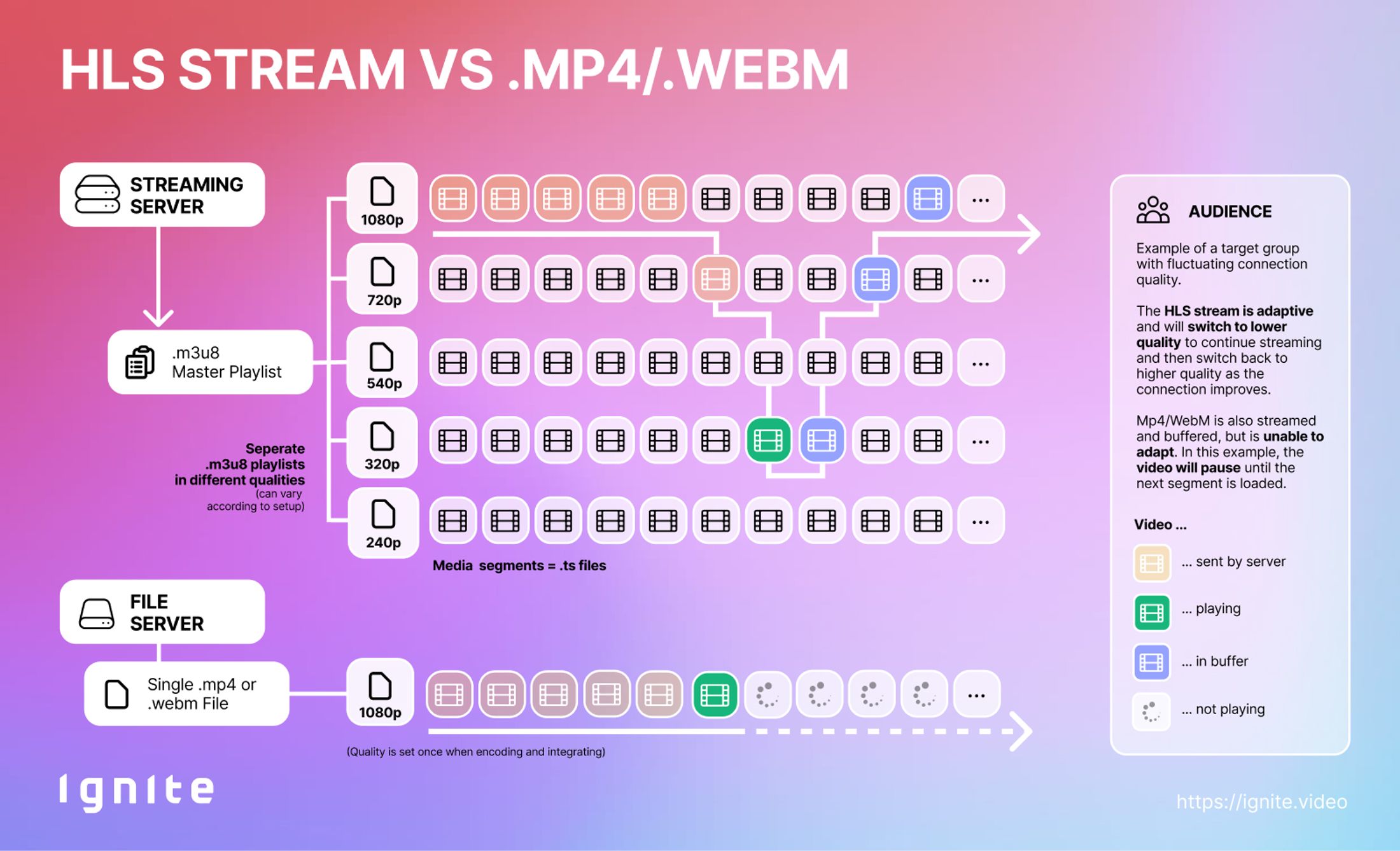
Conclusion: HLS streams are currently the best format for web video
HTTP Live Streaming (HLS) has fundamentally changed the way we consume video content, providing a reliable, scalable and easy-to-use solution for broadcasters and content creators. With the continued demand for high-quality video, HLS will continue to be a key technology in the digital content landscape, enabling content creators to effectively reach their audiences worldwide.
How Ignite delivers HLS streams
Everything you've read above happens automatically with us.
You upload a video and get the HLS streams. These can be easily integrated into your website with our video player using a simple copy and paste method, or you can use your technology.
Here's what it looks like in the Ignite backend:
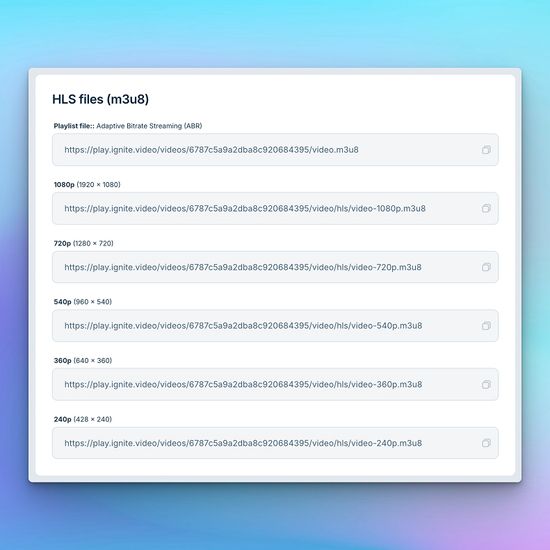
There is a master .m3u8 playlist, but there are also five different versions available: 1080p, 720p, 540p, 320p and 240p. The smaller HLS streams are used to save bandwidth and, for example, to place a small autoplay video behind a tile on a website.
For our enterprise customers, it is possible to define custom versions that vary in size and compression quality to further optimize traffic.
If you still prefer to use an MP4 file, the above qualities are also available for that format.
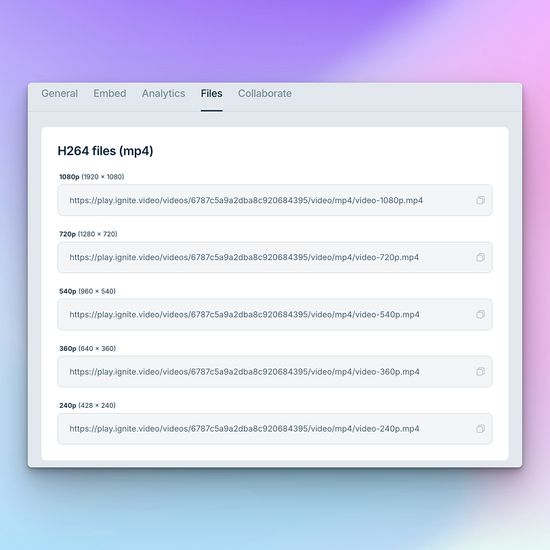
You don't necessarily have to visit our website to access these features; typically, integration into a CMS happens automatically via the "API".
Video-Hosting in Europe
To empower brands to realize the full potential of their video content, we made video hosting & streaming cookie- and consent-free. GDPR-compliant, hosted in Europe & easy to integrate. Made for Europe.